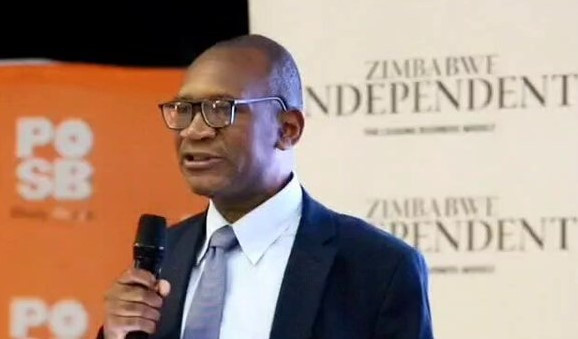
Gold remains Zimbabwe’s largest foreign currency earner, generating US$1,5 billion in 2024 alone.
In the first quarter of 2025, gold exports surged to US$395,9 million, a significant increase from US$303 million recorded during the same period in 2024.
Export earnings showed steady monthly growth from January to March: US$123,1 million was earned in January (up from US$112 million a year earlier), US$117 million in February 2025, compared to US$109 million in prior year, and US$155,8 million in March 2025, almost double the US$82 million recorded in March 2024.
A production target of 40 tonnes has been set for the full year 2025, which translates to 1,4 million ounces and applying a price of US$3 000 per ounce that will be US$4,2 billion. Gold deliveries rose 40,5% year on year, reaching 8,5 tonnes in the first quarter of 2025 compared to 6,2 tonnes in Q1 2024.
This growth has been largely driven by artisanal and small scale miners, whose output rose by 14% month on month, from 1,6 tonnes in February to 1,9 tonnes in March, a sharp rise from less than one tonne produced in March 2024.
Large-scale miners, by contrast, recorded only a marginal improvement, delivering 929kg in March versus 928 kg in February. This performance remains well below their historical peak of 1,5 tonnes in March 2023, when major mines operated at full capacity.
Unfortunately, large scale miners are currently grappling with significant operational challenges, equipment failures, unreliable electricity, and restricted access to financing, which have severely constrained their output.
These setbacks come at a particularly inopportune moment, when gold prices recently surpassed US$3 500 per ounce. Were it not for these difficulties, the potential boost to Zimbabwe’s export earnings could have been substantial.
- Hebrew Scriptures: The best way to stop suicide
- Mpofu plots DeMbare downfall
- Bosso bullish ahead of BF blockbuster
- Innscor volumes rise
Keep Reading
For instance, RioZim, one of the country’s top four gold producers, has struggled with equipment breakdowns and power disruptions, significantly impacting its production. Similarly, Bilboes, which helped Caledonia Mining achieve 80 000 ounces of output in 2023, has been placed under maintenance since 2024, further dragging down large scale production.
On a brighter note, Padenga has invested US$44 million since 2022 into developing the Pickstone underground mine, with US$13 million earmarked for 2025.
The project is expected to enhance production volumes and efficiency starting in 2026. The mine’s deeper shafts are projected to yield higher grade ore, positioning Padenga for significant gains as prices potentially hit new highs.
Meanwhile, CrossBoundary Energy’s (CBE) acquisition of Caledonia Mining Corporation’s 13,9 MWp solar plant could be a game changer for energy costs.
The plant already provides 21% of the power needs for Caledonia’s flagship Blanket Mine. Rising electricity costs, from US$9,63 million in 2022 to US$13,49 million in 2023 and US$14,87 million in 2024, have been a major burden.
CBE’s takeover should free up Caledonia’s capital for expansion into core mining activities, as they will continue purchasing the generated solar power.
With all these facets in mind, what does it mean for the broader economy?
We cannot yet draw a direct link between gold price performance and the stability of the Zimbabwe Gold (ZiG) currency.
In fact, despite an upswing in gold prices last year, ZiG depreciated by 43% in September alone. Similarly, hopes that gold earnings will surge this year and boost Zimbabwe’s foreign reserves remain uncertain, not until the structural issues facing the mining sector are resolved.
The data tells a sobering story: total export receipts in the mining sector fell by 27% to US$555 million in Q1 2025, down from US$759 million in Q1 2024.
This, despite a 16% increase in mineral export volumes. Power supply constraints hit the Platinum Group Metals sector particularly hard, while shipment delays, partly due to underperforming local toll processing facilities — compounded the problem. Additionally, exports to the United Arab Emirates, Zimbabwe’s top trading partner, were jeopardised by instability in the Middle East.
All of this casts doubt on Zimbabwe’s ambitious 6% GDP growth target for 2025, set by the Ministry of Finance.
Official projections hinge on a 12,8% expansion in agriculture, a 10,6% rise in electricity generation, 9,9% growth in information technology, and a 5,6% increase in mining output. Yet on the ground, the picture is far less rosy.
The World Food Programme, for example, forecasts that Zimbabwe’s maize production will fall short of national requirements by 10-15% due to prolonged droughts.
The energy sector faces its own hurdles: current Zesa tariffs are too low to attract critical infrastructure investment, and escalating power costs are becoming major headwinds for sectors that are pivotal to economic growth.
- Taimo is an investment analyst with a talent for writing about equities and addressing topical issues in local capital markets. He is an active member of the Investment Professionals of Zimbabwe community, pursuing the Chartered Financial Analyst charter designation.











